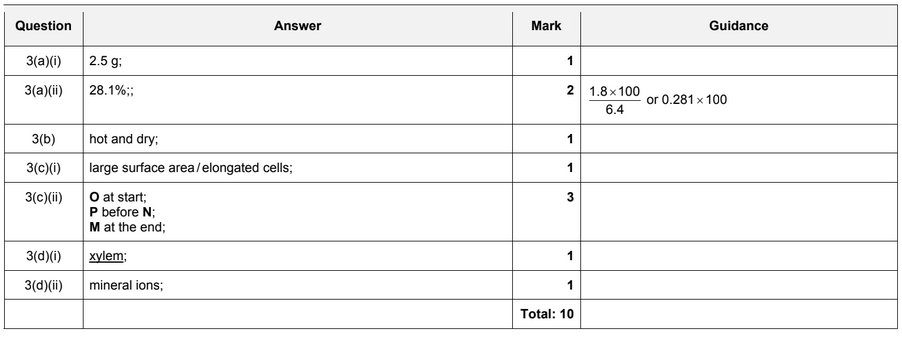Question
Fig. 5.1 shows some apparatus used to investigate transpiration.
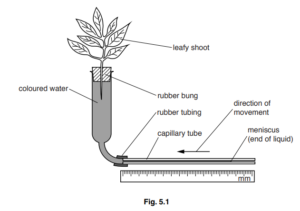
The rate of transpiration can be calculated by measuring how far the meniscus moves in
five minutes.
(a) Name the tissue that transports water from the roots to the leaves in a plant.
(b) The investigation was carried out at five different temperatures.
All other conditions were kept constant.
Table 5.1 shows the results recorded using the apparatus shown in Fig. 5.1.
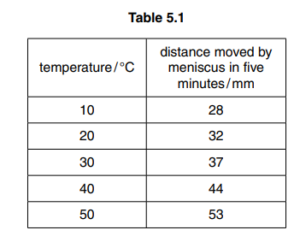
(i) State one conclusion that can be drawn from the results in Table 5.1 about the effect of
temperature on the rate of transpiration.
(ii) Suggest why the investigation was not continued at temperatures above 50 °C.
(c) The investigation was repeated using the leafy shoot shown in Fig. 5.2

(i) Predict how these results would be different to the results shown in Table 5.1.
(ii) Give two reasons why the results would be different.
(d) State one factor, other than temperature, that can affect the rate of transpiration.
Answer/Explanation
Ans
5 (a) xylem ;
(b) (i) rate of transpiration increases as temperature rises /ora ;
rate of increase becomes faster as temperature rises /ora ;
the higher the temperature the greater the distance moved by the
meniscus ora ;
(ii) 1 enzymes will be destroyed/ cease to function ;
2 shoot/ plant/ leaf/ cells die/ no transpiration ;
3 water loss greater than water intake ;
4 difficulty in achieving temperature (in lab) ;
(c) (i) less transpiration/(meniscus) will not move as fast or as far/ slower
rate of movement/ less water loss / less water uptake ;
(d) humidity ;
Question
A student carried out an investigation into transpiration from leaves.
She chose leaves of a similar size from the same plant.
She weighed them and then placed them in different conditions.
As the leaves transpired they lost mass.
Table 3.1 shows the results.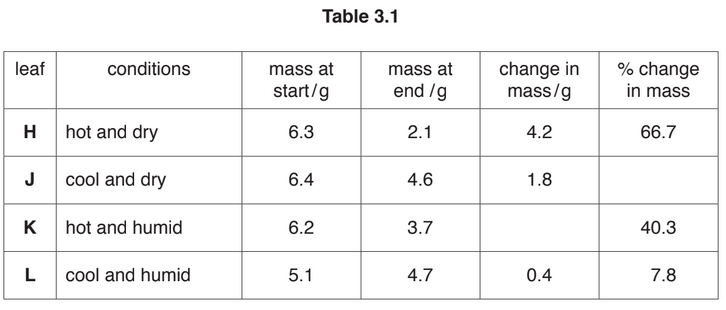
(a) Complete the table by calculating:
(i) the change in mass for leaf K …………………………………………………………………………..
(ii) the percentage change in mass for leaf J.
Show your working. Write your answer to one decimal place.
(b) State which conditions caused the most transpiration in the leaves.
…………………………………………………………………………………………………………………………….
(c) Fig. 3.1 shows four types of plant tissue involved in the transport of water through a plant.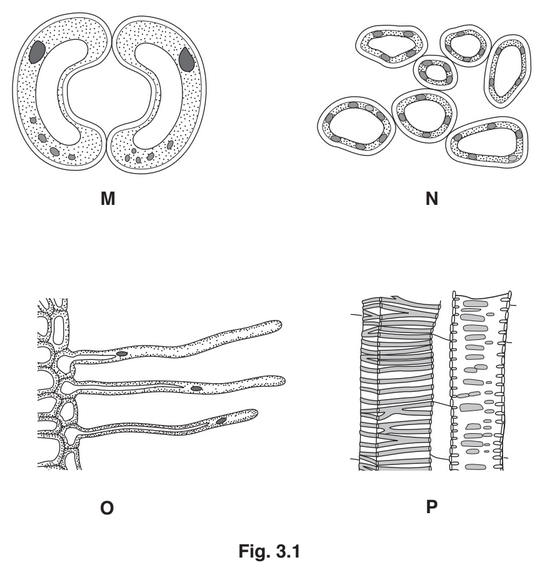
(i) Describe how tissue O is adapted for its function.
………………………………………………………………………………………………………………………….
………………………………………………………………………………………………………………………….
……………………………………………………………………………………………………………………..
(ii) Complete the flow chart by placing the letters of the cells M, N, O and P in the correct
order, starting with the absorption of water.
(d) State the name of:
(i) the type of tissue in which water is carried up the stem
……………………………………………………………………………………………………………………..
(ii) another substance which is carried in the same tissue.
……………………………………………………………………………………………………………………..
Answer/Explanation
Ans: